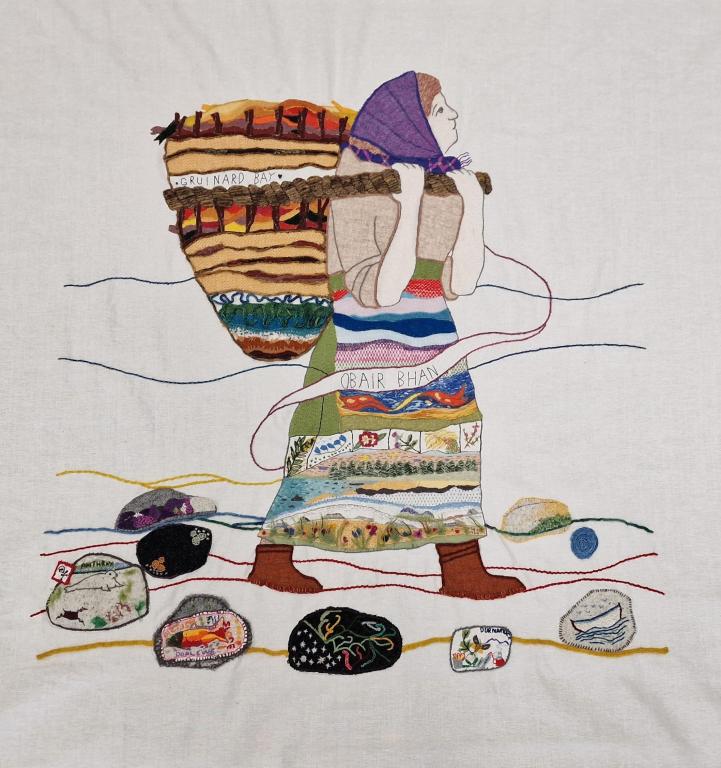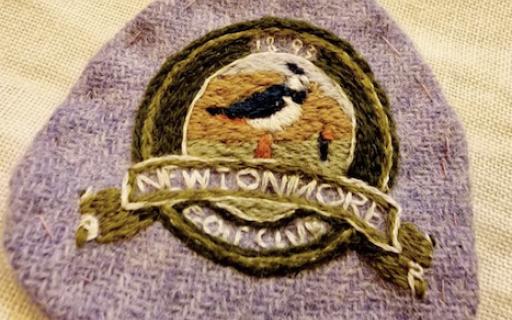
Morag, the Kelp Collector
The By Ewe stitchers came together from around Gairloch and Ullapool with the task of bringing to life a female figure collecting kelp, one of the area's historical industries. The stitchers didn't just stitch the panel, they gave their kelp collector a life based on their own experience.
This is their story.
Now, we are By Ewe;
now, we are stitchers.
Skilled and strong and proud,
but not at first.
There we were,
some known, some half-known, some unknown.
There was she,
a life-like figure on linen.
Where to start?
How to start?
Could we do it?
Should we do it?
Meeting together,
we discussed, decided, practised.
Coming together,
we stitched, we couched, we appliqued.
We gave her a name, the figure.
She became Morag, our Morag.
We stitched her hair; we stitched her dress.
She slowly waked, began to live.
Soon, she will be completed,
our kelp gatherer, our Morag.
Soon, we will give her back,
our beautiful Morag.
Then we will be mothers
who celebrate our well grown child.
Then we will be mothers
who mourn the loss of that same child.
 Morag, the Kelp Collector.
Morag, the Kelp Collector.Image provided by By Ewe Stitchers
Kelp was a major industry in Scotland particularly in the 18th Century which required a large workforce to harvest seaweed and process this into kelp. Tens of thousands of people from Orkney, the West Coast and the Outer Hebrides were employed in this important industry. The story of kelp collecting is one of harsh conditions and heavy loads. Morag carries her basket inscribed with the words Gruinard Bay.
Gruinard Bay was a traditional area to gather seaweed, a valuable resource for coastal living. Brown seaweeds are a good fertiliser as they have high levels of potassium and nitrogen. Plants brought in by winter storms were dug directly into the soil after only a short period of composting. Oats, wheat, barley, potatoes and brassica were then planted. Crofters in the Western Isles still use seaweeds in this way, although processed seaweed-based fertilisers are also available.
Morag is full of texture. Using different stitching techniques we were able to bring her clothes and basket to life, building up 3D elements and stitching intricate details which tell the story of our area like flora and fauna, local wildlife and sites.
Learn more about Morag and the By Ewe stitching group in the video below
Read more of our stories
WITH THANKS TO THE BY EWE STITCHERS
This panel was stitched by Melanie McAdam, Sue Bance, Serena Mason, Sue Pomeroy, Jane Rowe, Anna MacIver, Marianne Kenley, Kathleen Martin, Fiona Tulloch and Amanda Payne who gave their time, skill and energy to completing a fantastic artwork for their area.
If you would like to see the panel up close and admire the detail of their work, you can currently view the panel in the Inverness Castle Experience.
EXPLORE MORE STITCHERS STORIES BELOW
Swipe left for more










